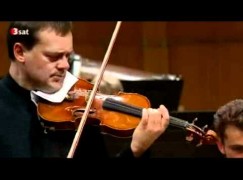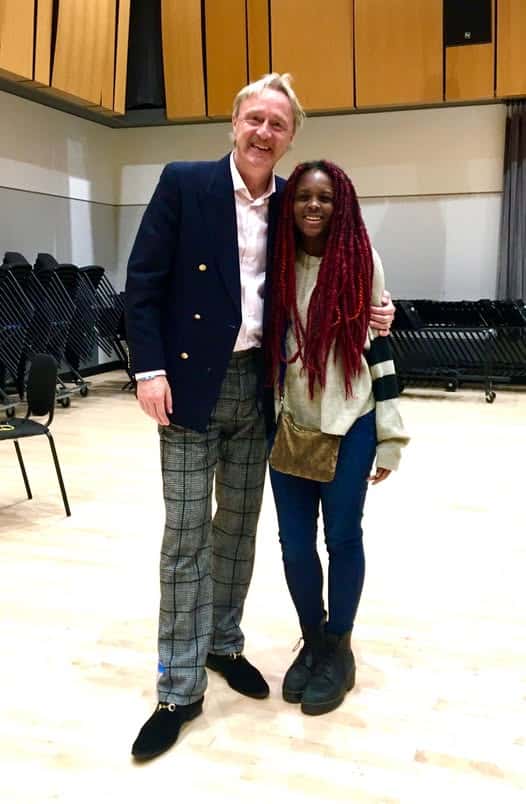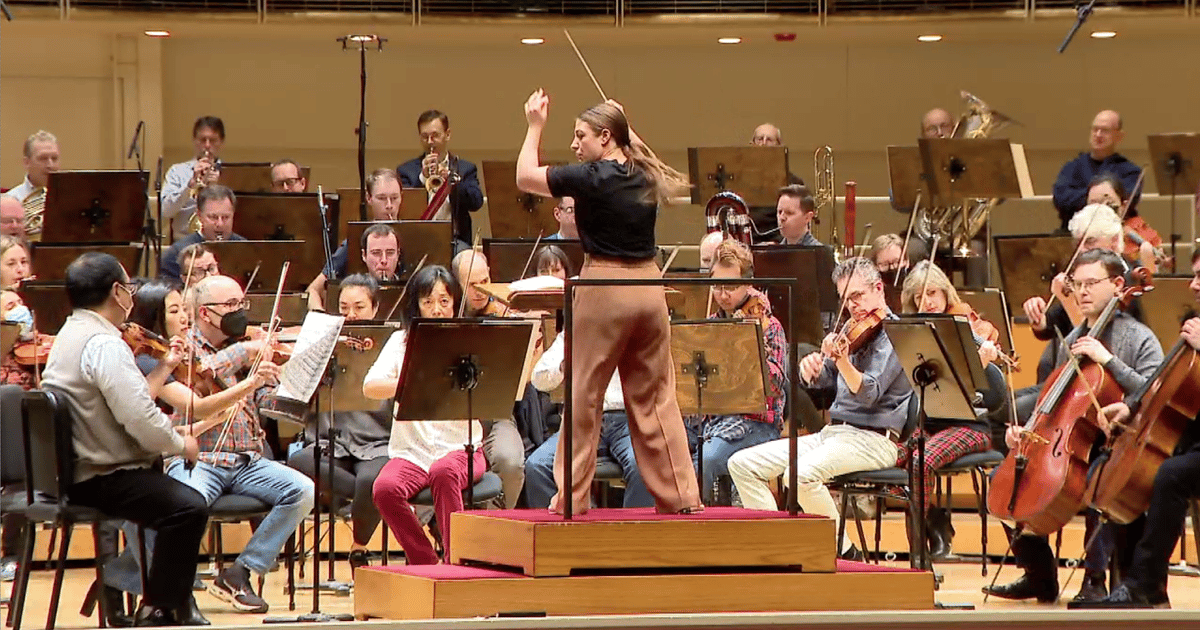How a Chinese stranger found my perfect Strad
mainThe German virtuoso Frank Peter Zimmermann relates what happened to him after a failing bank called in his previous Stradivarius.
It’s a tortuous tale of nights with the wrong violin, posted today by the Czech Philharmonic.






Wow! I hope Mr. Yu has more durable finances than that bank.
What an extraordinary and wonderful tale!
A beautiful and touching story, and I’m very glad for Mr Zimmermann, whose recordings I admire. However, it poses a few questions. I should at this point mention that I am a trumpeter (who is in the lucky position that he can get any instrument he could possibly desire between €2000 and €5000).
Are the prices for e.g. Strads realistic in the sense that they represent the true value of the instrument, or is this a case of prices driven up by collectors, banks and investors? Does the provenance of the violin drive the price up further? I have heard e.g. stories of Blues Rock guitarist Gary Moore having sold his “priceless Peter Green” Gibson because he would not have been able to afford insurance for it any more. In this case, the value of the instrument was driven into the stratosphere because of the people who had at one time or another held/played/recorded on the instrument.
Is it really impossible to build modern violins that can compete with antique ones? I do understand the idea of old craftsmanship and wood that has had the chance to mature for half a century, but are Strads&Co really this far above the rest? Or is it more of a mojo thing – like Rock guitarists saying that you cannot possibly play on anything else than a pre-67 Fender Strat (that’s Stratocaster BTW)?
Be this as it may, I do realize that artists like Zimmerman need to feel a true symbiosis between them and the instrument to do their best. However, I’m sure their fans would recognize their artistry and their typical tone on any instrument of superlative quality; in the end it’s the mind that moves the hands and fingers, and the fingers that touch the bow and the strings.
Finally, I find it sad that this leaves string players at the mercy of banks, investors and rich people, but I guess art has always had to live with that as long as it has existed.
These two SlippedDisc threads and the links within should answer most if not all of your questions.
– https://slippedisc.com/2012/01/exclusive-how-i-blind-tested-old-violins-against-new/
– https://slippedisc.com/2014/04/6-out-of-10-soloists-cannot-tell-a-strad-from-a-new-violin/
The price of Strads is not purely driven by buyers willing to pay any price, it could also be determined by sellers not willing to sell just to anybody. It is reported that the Totenberg daughters are selling their father’s Strad to a specific buyer, a musician it seems, rather than, say, putting it up at Christie’s or Sotheby’s.
Every once in a while, you get reports from science journals that in a blind test, apparently, professional musicians, neither the performer nor the listener, can tell the difference between a Strad and a top of the line modern violin. Predictably, musicians howl in protest that the blind tests were not well designed etc etc
The other thing that made me think: “Is this the Grumiaux Violin?“
Is the tone of the violin itself really this distinctive? I congratulate Mr Zimmermann on being able to identify the instrument after 5 notes, but this is something that surprised me. I’m sure that e.g. Maurice Murphy would have sounded like Maurice Murphey, even if he had played on Maurice Andre’s trumpet for a gig, and vice versa. Is it different with violins? How much is the instrument, how much is the person? I would have thought, the person would always shine through, no matter what instrument (and recording/playback equipment, for that matter) was put between the artist and the listener.
Obviously, Maurice’s second name should have been spelt “Murphy” both times.
Wooden string instrument seem to have more individual strengths and weaknesses than brass instruments.
This may be because brass is an alloy whose manufacture is well-understood and can be purposely made to very specific qualities while wood is not manufactured at all, it can only be chosen from what comes out of a convenient tree and good results hoped-for.
Also, brass instrument building lends itself to closely repeatable steps in a way that string instrument building does not.
Also… brass instrument players are a physical part of the instrument in a way that string players are not. Murphy can borrow Andre’s trumpet but he’ll never have Andre’s lips and respiratory tract… and vice versa.
That has to be the most stupid comment ever, it would be a shame if you were a musician. Implying that string musicians don’t really play a physical role with the instrument is absurd. The BOW alone, the right hand alone is a world of its own, ANY string musician knows that and it’s too bad that you ignore it because you think Brass rocks and everything else is just a lesser thing.
Indeed. “Murphy can borrow Andre’s [violin/viola/cello/bass] but he’ll never have Andre’s [wrist, right arm and personal style of bowing]… and vice versa.”
Just in case this was ever in doubt: I never meant this to be a brass versus string issue. I was just using a comparison that I was familiar with from my own experience. I wonder if a violin player could shed some light on this issue.
Later this week I also hope I’ll find time to listen to this BBC bradcast, which may or may not be related to this dicussion:
http://www.bbc.co.uk/programmes/b0742lqw
You lose, Janice.
The bow arm of a violinist emits not one cycle of sound no matter how expertly it moves the bow on the string and no matter how much you imagine it otherwise.
It will NEVER be the vibration that IS the musical note. String players will never have a part of their body that creates the vibration as a brass player’s has. Ever.
Your absurd internet umbrage only amplifies your mistake in this matter. It’s not any lack of musicianship on my part that created your ignorance.
Sorry Robert, but you have your head way too far up your… French Horn. Your inane comment isn’t even worth explaining why you’re wrong. No one here even agrees with your inane statement.
Actually yes. If you are familiar enough with a player’s sound and (not the same thing) style of playing, you can tell when it’s that person playing on one instrument or another.
A good example of this is when Jacqueline Du Pre — a well-known cellist with a distinctive “voice” — bequeathed her two instruments to Lynn Harrell and Yo-Yo Ma. They both continued to sound like themselves, of course, but you could hear qualities of her sound (really qualities of her instruments) in their playing when they used those instruments.
It doesn’t surprise me a bit that F-P Z, as a lifelong Grumiaux fan (and someone who has put a lot of thought into violin tone), would recognize Grumiaux’s violin by its sound.